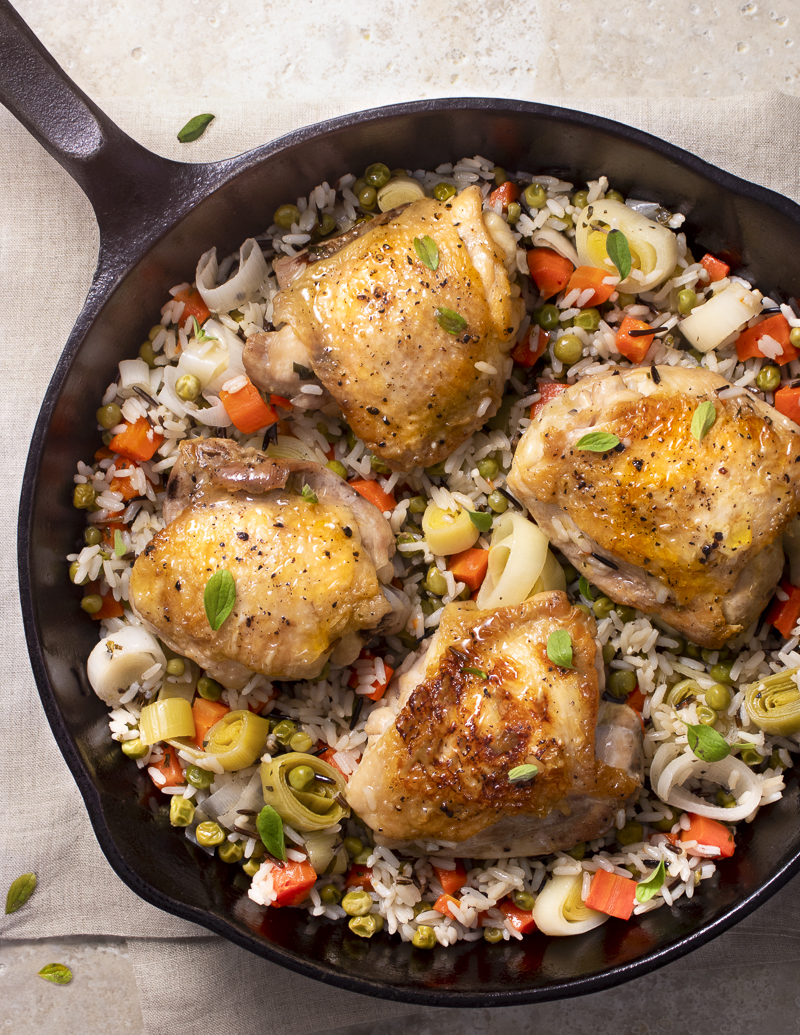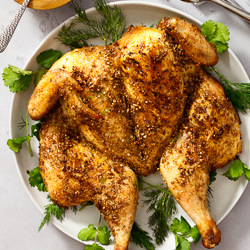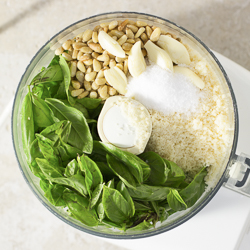It’s a fairly common instruction. You’re making a recipe—this Spring Chicken and Rice Stovetop Skillet, perhaps—and it includes pan-searing or frying something—in this case, chicken thighs—and the recipe tells you not to crowd the skillet. But why?
In a word, browning.
What’s so important about browning? Browning helps things taste good. It gives dimension of flavor to your food, adding roasty, toasty, caramelized notes. Think of the taste difference between, for example, poached chicken and chicken that’s been pan-seared. That’s browning.
Does that mean you should never poach? Not at all. Sometimes the clean flavors of that cooking method are exactly perfect for what you’re making. But it’s useful to know what yields what, to better have all you cook turn out like you want it to.
But what does browning have to do with not crowding the skillet?
Most food has a relatively high proportion of water. And when you cook, that water burns off in the form of steam. The more crowded your skillet, the more that steam has no escape route.
In other words, the more crowded your skillet, the more you’re steaming your food, which is antithetical to the hot, dry conditions you need for tasty browning.
Is steaming bad? Absolutely not. In my Spring Chicken and Rice Stovetop Casserole, for example, after browning the chicken, lots more yummy stuff gets added to the skillet, so it’s definitely crowded in there and steaming is definitely happening. But we’re finished pan-searing at that point and have already added those brown flavors to our dish.

How do you know you’re not crowding the skillet?
The above image shows a pretty good spacing. Initially, the raw chicken pieces are touching just at the corners but there’s plenty of room around most of the edges. Once nicely golden-brown, the pieces have shrunk a bit and there’s even more space between them.
What’s too much?
If most of the edges of the food that you’re trying to brown are touching the edges of other pieces, you’re probably crowding the skillet.
If you’re saying to yourself, let me just scooch these couple of pieces over so I can fit in one or two more, you’re probably crowding the skillet.
If you use a skillet smaller than what the recipe calls for, you’re probably crowding the skillet.
And if you hate cooking in batches, you’re probably crowding the skillet—at least occasionally.
More tips for browning
We’ve been talking about skillets on the stovetop, but these principles apply to oven cooking as well. To get good browning on, say, a sheet pan of roasted potatoes, you need to avoid too many potatoes on the sheet pan.
Another related note. The higher the sides of the cooking vessel, the more that vessel traps steam. So you’ll get better browning in a skillet than a stockpot, and better browning on a sheet pan than in a baking pan. Makes sense, right?
I often say it’s little things that can make a difference between good food and great food. Not crowding the skillet is one of them. And now you know why. :)
Recipes to practice not-crowding:
Spring Chicken and Rice Stovetop Casserole
Chicken Paillards with Asparagus, Lemon, and Garlic
Pan-Roasted Salmon with Cilantro-Scallion Salsa
Fillet of Sole with Lemon-Wine Pan Sauce










